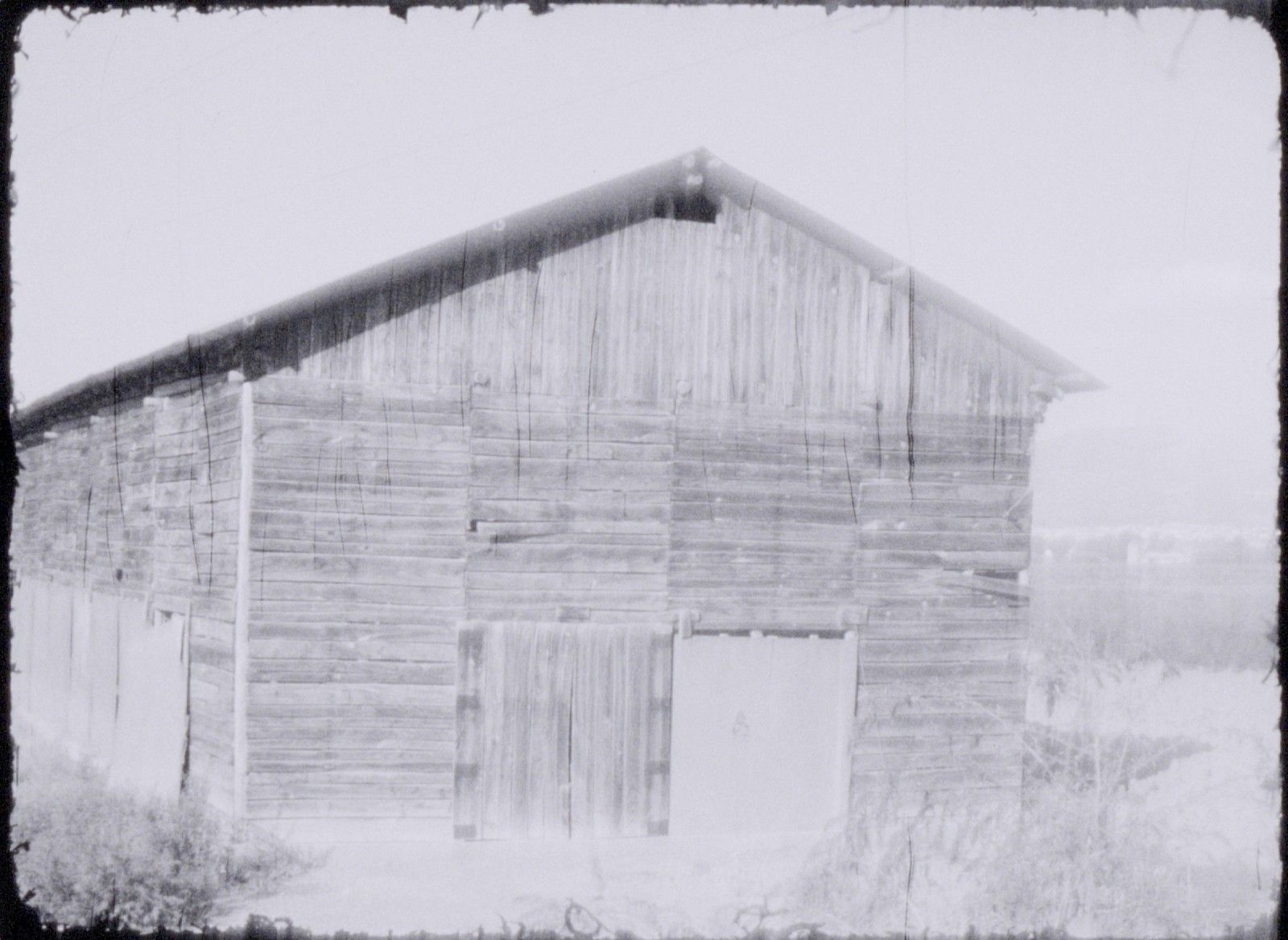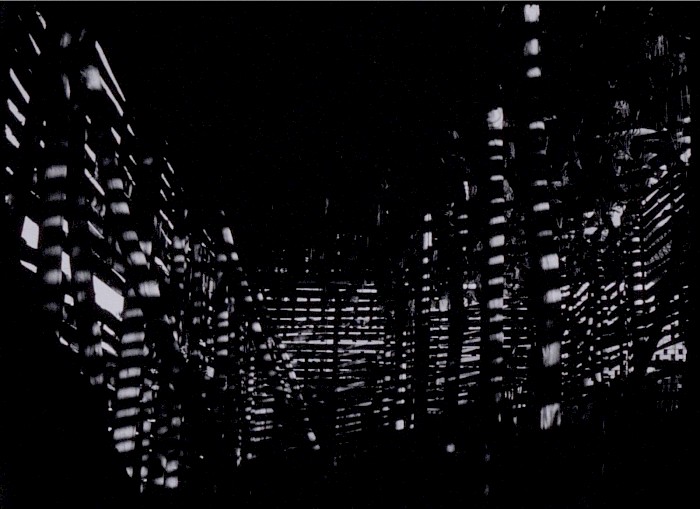Shown in Compétition #2.
Synopsis
The tobacco plant was introduced to Granada (Southern Spain) in 1923. It became a monoculture in the region until the end of the century. When the tobacco production stopped being profitable, the farmers switched to new crops like wheat, corn or asparagus. However, the lands of Granada are still replete with tobacco barns: large empty houses where the leaves used to be hanged to dry. They inhabit the landscape like architectural ghosts.
Text from the selection committee
Short and silent documentary film, presented in an almost lavender-toned black and white; a study of the abstraction created by the light passing through the barns’ cracks.
– S.M.
What is the starting point for Tabacco Barns Light Studies?
I grew up in a rural village in La Vega, Granada (southern Spain), where tobacco was a monoculture during the 20th Century. More than 6,000 tobacco barns were built in this area during the golden years of this agricultural business, which became the main economic activity of the region and a very important part of its idiosyncrasy. The tobacco industry got stronger international competitors and the Spanish farmers were forced to switch their crops to something more profitable, like asparagus or corn. However, there was an element that remained: thousands of obsolete tobacco barns that were used to dry the harvested tobacco leaves.
I became highly interested in these architectonic elements, mesmerized by their beauty and meaning. First of all, I was intrigued by the materiality and characteristics of “agricultural architecture”. For example, since the barns are designed to let the air circulate, they need to have plenty of open spaces in the walls, creating gorgeous grids of light in the interior of the buildings.
I was also intrigued by the power of these big structures as a reminder of the land’s past and history. The moment the tobacco crops are gone, these buildings lose their purpose, becoming a form of sculpture or architectural ghosts.
During the location scouting of a feature film I am working on, I went back to my homeland and I spent some time visiting many of these abandoned tobacco barns and developing an interest in filming them. I am currently based in California, so this project was also a subconscious way to get closer to my roots. I deeply enjoyed looking at the different abstract creations the sun would paint indoors the empty barns, which changes depending on the time of the day. This strong connection between time, history, astrological elements, abstraction, architecture, agriculture, and mysticism created a spell on me that drove me to work on this film.
What technique did you use to create it? What was your shooting equipment during the filming? Can you tell me more about your creative process?
I decided to work on 16mm, Kodak Tri-X #7266 reversal since black and white was the only way to achieve my vision of this project. I decided to use a Krasnogorsk-3 camera with a malfunctioning pressure plate that creates an interesting phantasmagoric effect that was perfect for the meaning behind this piece. One of these beautiful scenarios in which “a mistake” turns into the right thing. Besides that, my only film materials were a tripod, a notebook, and a pen. I wanted the piece to be silent, completely focused on the abstract visuals, and empowering the spiritual spectrum of the phantom presence by the absence of sound. Like an extremely beautiful horror film.
As a woman, I felt like it was dangerous to explore some of these solitary buildings on my own, so I brought some of my family members with me on several occasions. I wish I didn’t have to deal with these fears imposed on me by the patriarchal society we live in, but I also treasure the memories of those moments spent in the company of my mom or my cousin, who I normally get to visit only once or twice a year.
How long did it take to make your film?
Any artistic piece we create takes our entire life until the moment we complete it. That assumption aside, the filming process took around two weeks. I spent one week focused only on observing. I scouted a few tobacco barns that were interesting due to their architectural qualities and their position in relationship with the sunrise and sunset. I wanted to work with tobacco barns made out of poplar wood (the traditional ones) and also the ones made out of bricks (more modern). I visited the selected barns every day at different times of the day and I kept a diary with notes and photographs, keeping track of the behavior of the light. I would also write about my encounters with local farmers and our conversations. By the end of that week, I had a clear idea of the shots I wanted to get, and, due to budget restrictions, I managed to film them all in one roll that I carefully carried with me back home to California. I developed and scanned the film, proceeding to edit the piece digitally. I wanted to finalize the process analogically, so I cut my negative and I did A&B rolling with the help and support of the fantastic Chris Weber, a very inspiring veteran woman. This entire process took a total of 11 months. It could have been done faster, but life works in mysterious ways.



